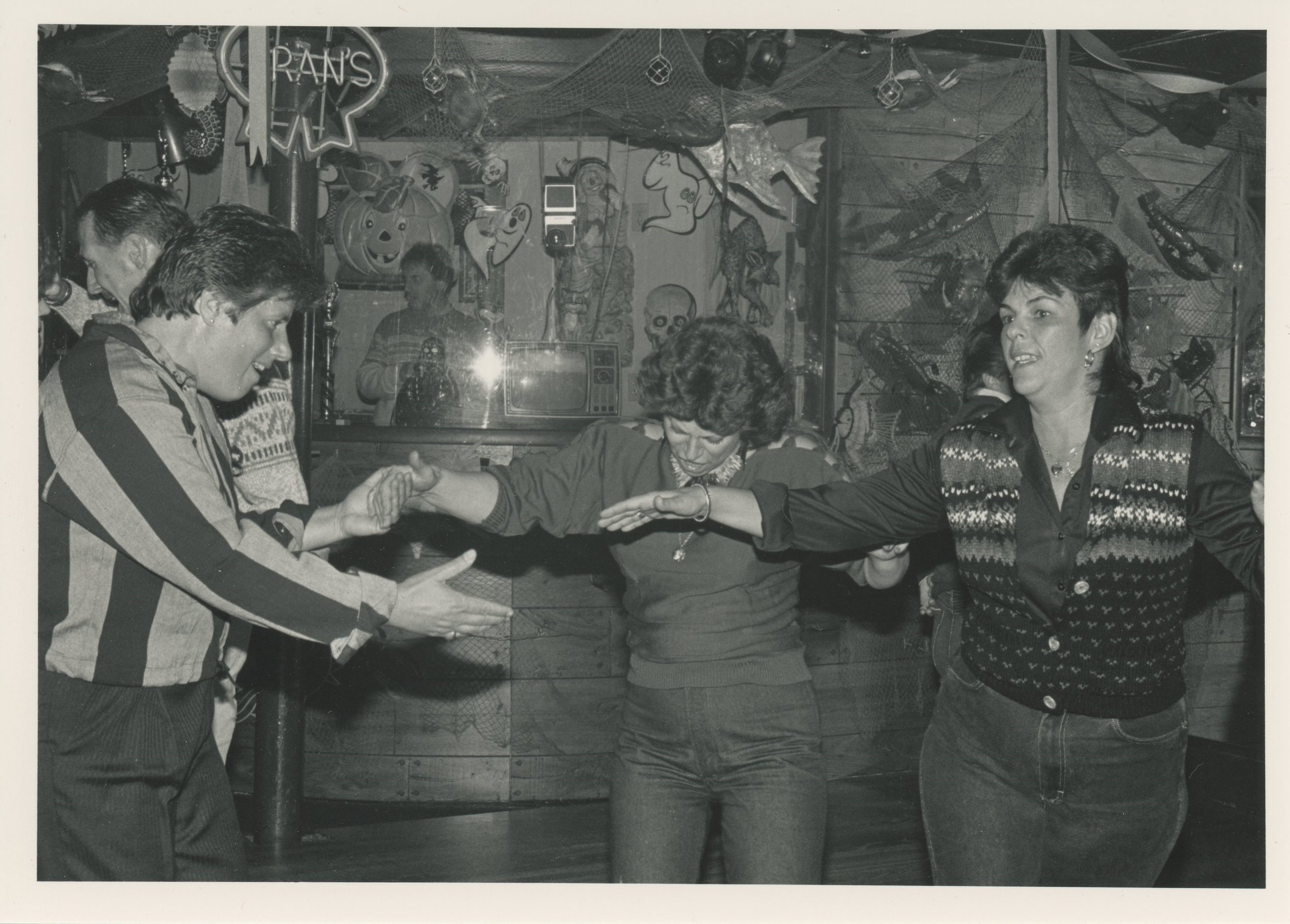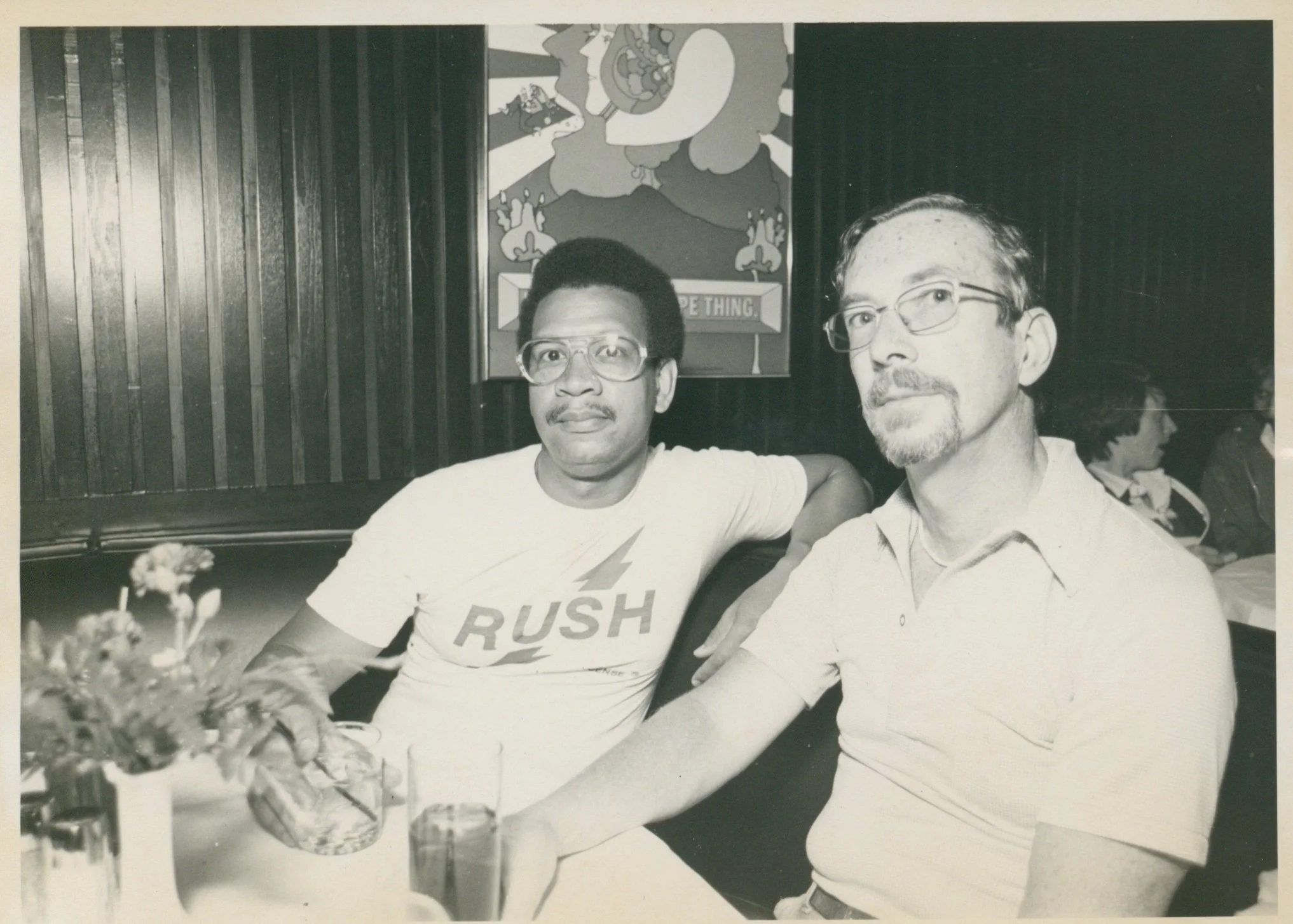As the World Burns: Queer Photography and Nightlife in Boston | Tufts University Art Galleries
Allen Frame, Kevin in polka-dotted dress, Cambridge, 1974, Gelatin silver print, Courtesy Gitterman Gallery © Allen Frame
Written by Meighan Ashford
Photo Edited by Kelly Woodyard
In entering the world of "As the World Burns: Queer Photography and Nightlife in Boston," one is immediately engulfed in a rich tapestry of images from pictures, stories, and firsthand accounts shedding light on the crucial, yet often disregarded junction of queer culture, nightlife, and early 1970’s Boston photography. Ultimately, the exhibition offers a captivating journey through the intertwined histories of LGBTQ+ communities. Doing so offers a visual representation of the queer community while contextualizing Walker's exploration of the 1970s and 1980s queer community, art, and life. Jackson Davidow, art historian and critic in collaboration with TUAG Curator Laurel V. McLaughlin, is the curator.
Allen Frame, Nan photographing at The Other Side, Boston, 1973, Courtesy Gitterman Gallery © Allen Frame
Moreover, the three distinctive, yet related categories of nightlife photography composing the exhibition's framework each highlight a different aspect of Boston's LGBTQ+ community. The first category features photographs taken by photographers typically categorized as "fine art," whose shots capture the essence of gay nightlife from a highly aesthetic perspective. The images capture the intense energy of the club scene while displaying the strong emotional bonds formed there. All assisting in the creation and establishment of LGBTQ identities and communities in the public sphere during a time of profound change.
Patricia A. Gozemba, Untitled [Fran’s Place], 1983, Black and white photograph, 5in x 7in, Courtesy of The History Project
The contributions of photographers to the gay press are covered in the second category. Each of their images was essential in the LGBTQ+ community's representation. By providing a visual narrative challenging stereotypes found in mainstream media, the photographers widely contributed both to the development of collective identity and political consciousness within theLGBTQ+ community through the use of these photographic projects.
Providing a personalized, grassroots view of queer nightlife, the third and final category features vernacular works created by community members themselves. A genuine and unfiltered look into the daily struggles of LGBTQ+ people navigating spaces of solidarity and self-expression is offered by these photos, which are more so frequently taken by members of the community also.
Mark Winer, As the World Burns, 1973, Digitized Super 8 film, 18:00 min, Courtesy of the artist
A sophisticated understanding of how nightlife customs and photographic endeavors interacted to shape LGBTQ+ communities during a time of significant social upheaval stems from the varied archive of pictures and narratives. As the exhibition’s title implies, both coming and going out were not discrete acts. Rather, intricate rituals make queerness and community evident and validated.
Not only does "As the World Burns" provide a retrospective look at queer history, but an analysis of the themes' continuing significance in today's world. The curators invite viewers to consider the continuous struggle of LGBTQ+ communities for visibility, acceptance, and liberation. Specifically, by placing the exhibition within the larger context of Christian Walker's queer navigation of art and life in Boston.
In sum, "As the World Burns: Queer Photography and Nightlife in Boston" is a moving and thought-provoking display honoring the rich history of queer culture in Boston. It also encourages us to consider photography as a potential catalyst for social change through these images. On display from January 24 - April 21st, the exhibition’s stirring narratives encourage us to change our perspectives, confront preconceptions, and involve ourselves in the ongoing fight for queer representation.
Angela Russo, GCN Benefit at Club Max, 1978, Photograph, 5 x 7 in., Courtesy of Northeastern University Library












